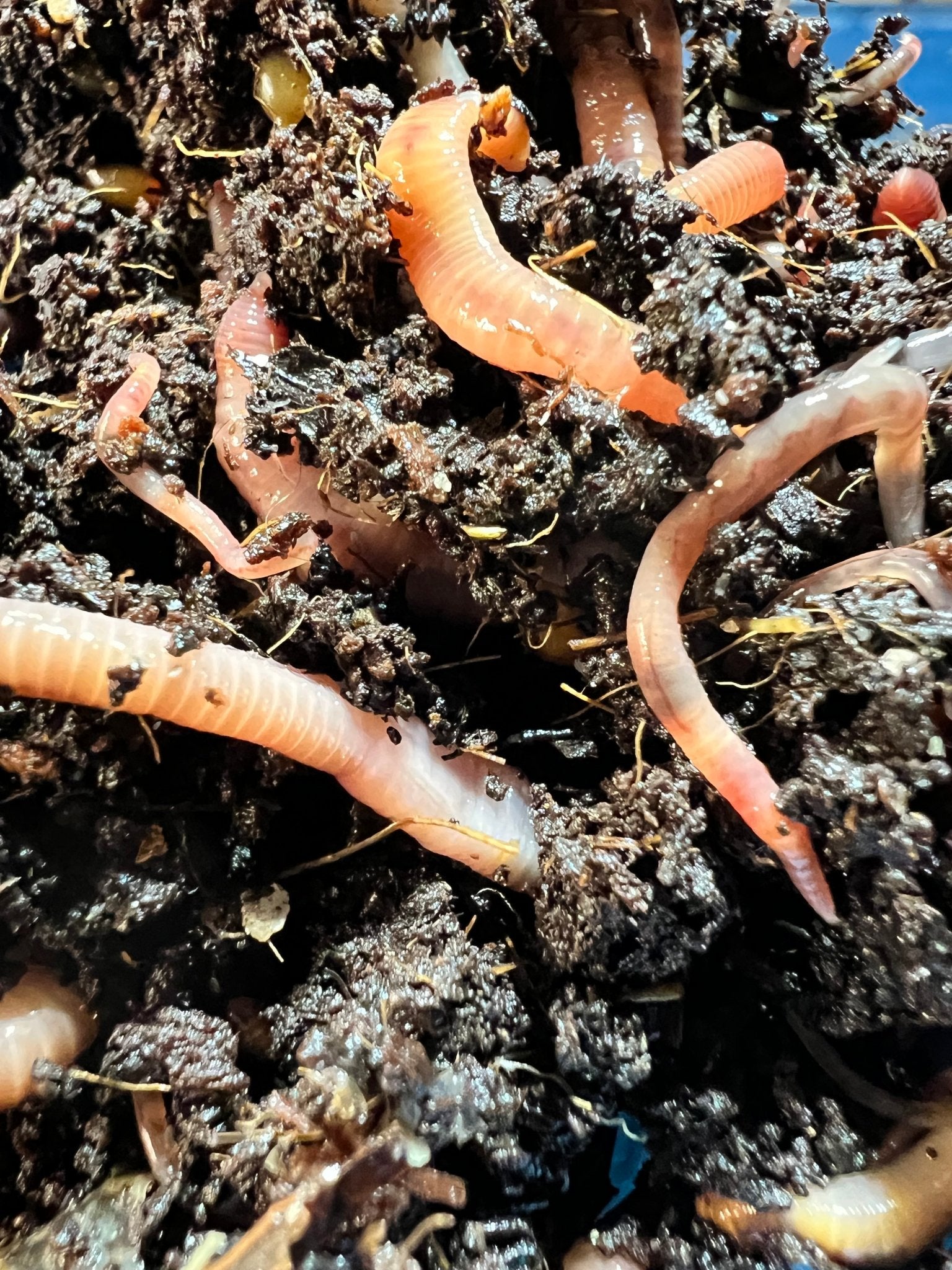Red Wiggler Worms - Important for Healthy And Balanced and Efficient Gardens
Red Wiggler Worms - Important for Healthy And Balanced and Efficient Gardens
Blog Article
Red Wiggler Worms Demystified: Opening the Tricks of Vermiculture for Greener Living and Nutrient-Rich Soil
In the realm of lasting practices for improving soil high quality and promoting eco-conscious living, red wiggler worms play a crucial yet commonly neglected role. These modest creatures possess the impressive capability to transform organic waste into nutrient-rich castings that act as a potent all-natural fertilizer. By diving right into the world of vermiculture, one can discover a variety of benefits that expand much past typical composting methods. Comprehending the ins and outs of taking care of these worms, optimizing their environment, and using their castings can result in a greener way of life and much healthier soil for plants to grow.
The Duty of Red Wiggler Worms
Red Wiggler worms play a vital role in composting systems by successfully damaging down raw material into nutrient-rich spreadings. These ravenous eaters take in a range of natural materials, such as kitchen area scraps, lawn waste, and paper products. As they feed, the worms' digestive system processes break down the raw material right into a penalty, dark, and nutrient-dense product recognized as worm castings or vermicompost.
The castings created by Red Wiggler worms are very advantageous for soil health and plant development. They are abundant in crucial nutrients like nitrogen, phosphorus, and potassium, which are important for sustaining healthy plant growth. In addition, worm spreadings have advantageous microbes and enzymes that assist boost dirt framework, rise water retention, and boost nutrient uptake by plants.
Advantages of Vermicomposting

It enhances soil structure, boosts soil aeration, and boosts dirt moisture retention. Vermicompost likewise improves the soil with vital nutrients like nitrogen, potassium, and phosphorus, promoting plant development and total soil fertility.
Additionally, vermicomposting supports sustainable horticulture techniques by offering a all-natural and chemical-free choice to synthetic fertilizers. Red Wiggler Worms. This eco-friendly technique not just improves the dirt but also helps decrease reliance on harmful chemicals, promoting a greener and much more sustainable means of horticulture
Establishing Up a Worm Bin
When establishing a worm bin for vermicomposting, proper setup is essential to make certain the success of the composting procedure. The very first action in establishing up a worm bin is picking an appropriate container.
After adding the bed linen, introduce the red wiggler worms to the container. It is advised to begin with a little number of worms and gradually boost as they increase. The worms need to then be provided with food scraps such as vegetables and fruit peels, coffee premises, and eggshells. It is important to avoid adding meat, dairy, oily, or salty foods to avoid drawing in bugs and developing undesirable odors.
Consistently keep an eye on the dampness degrees and temperature level in the worm container to ensure ideal conditions for the worms. With appropriate configuration and upkeep, the worm container will properly transform natural waste into nutrient-rich compost for your plants and yard.
Harvesting Worm Spreadings
To efficiently accumulate nutrient-rich worm spreadings from your vermicomposting system, a methodical harvesting technique is necessary. When it comes time to harvest the worm spreadings, there are a couple of key steps to follow to guarantee an effective process.

Troubleshooting Common Issues
Recognizing and addressing usual challenges that might arise during the vermicomposting process is essential for preserving a healthy and balanced and effective worm bin. One typical issue that vermicomposters encounter is overfeeding. Adding excess food scraps can cause a buildup of wetness and acidity in the worm container, possibly like it hurting the worms. To stop this, feed the worms in small amounts, making certain that the food scraps are appropriately broken down prior to adding extra. An additional issue is undesirable smells emanating from the worm bin. Foul smells indicate anaerobic problems, typically brought on by overwatering or poor ventilation. To read this correct this, change the wetness levels by including dry bed linens products like shredded newspaper or cardboard and increase aeration by transforming the bed linen frequently.
Additionally, if the worm populace is declining or the worms show up harmful, it can be due to ecological stressors such as extreme temperature levels or pH levels. Checking these aspects and making essential modifications is essential for the health of the worms. By repairing these usual problems quickly, vermicomposters can guarantee a smooth and effective vermicomposting procedure while keeping a thriving worm populace.

Conclusion
In final thought, red wiggler worms play a vital role in vermiculture by damaging down natural matter right into nutrient-rich dirt. Establishing up a worm bin is necessary for successful vermiculture, and gathering worm spreadings supplies beneficial compost for horticulture.
As they feed, the worms' gastrointestinal processes break down the natural issue into a penalty, dark, and nutrient-dense product recognized as worm spreadings or vermicompost.
The spreadings created by Red Wiggler worms are extremely helpful for soil health and wellness and plant development. Adding excess food scraps can lead to a build-up of wetness and level of acidity in the worm bin, potentially hurting the worms.Furthermore, if the worm population is declining or the worms appear undesirable, it could be due to ecological stress factors such as severe temperatures or pH levels. Setting up a worm container is crucial for see successful vermiculture, and gathering worm castings gives useful compost for gardening.
Report this page